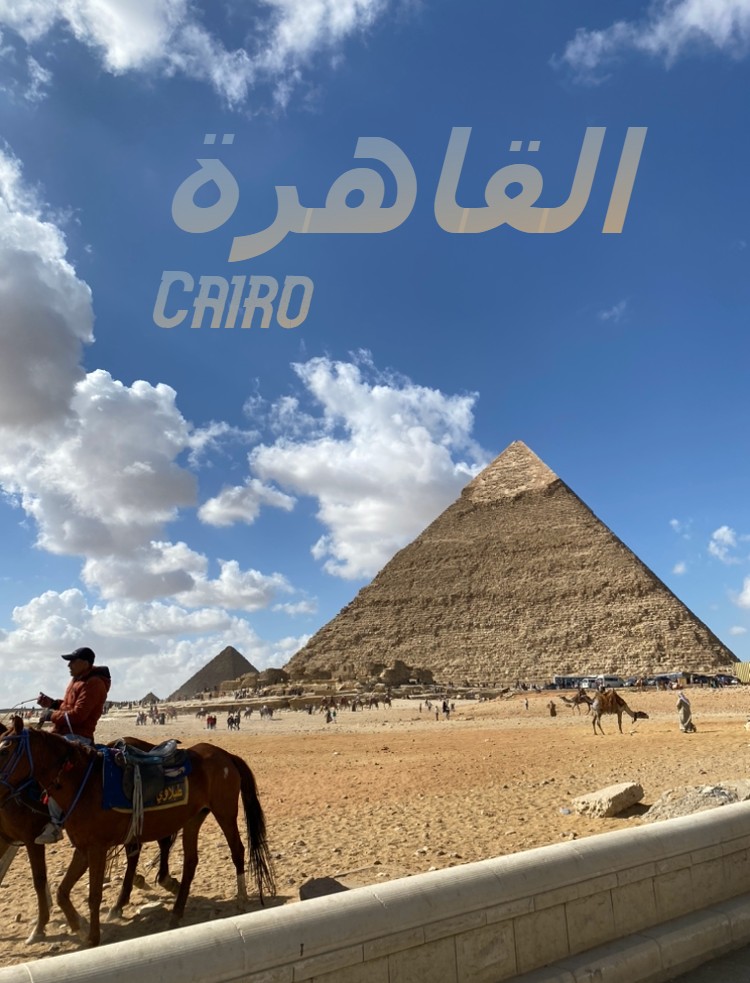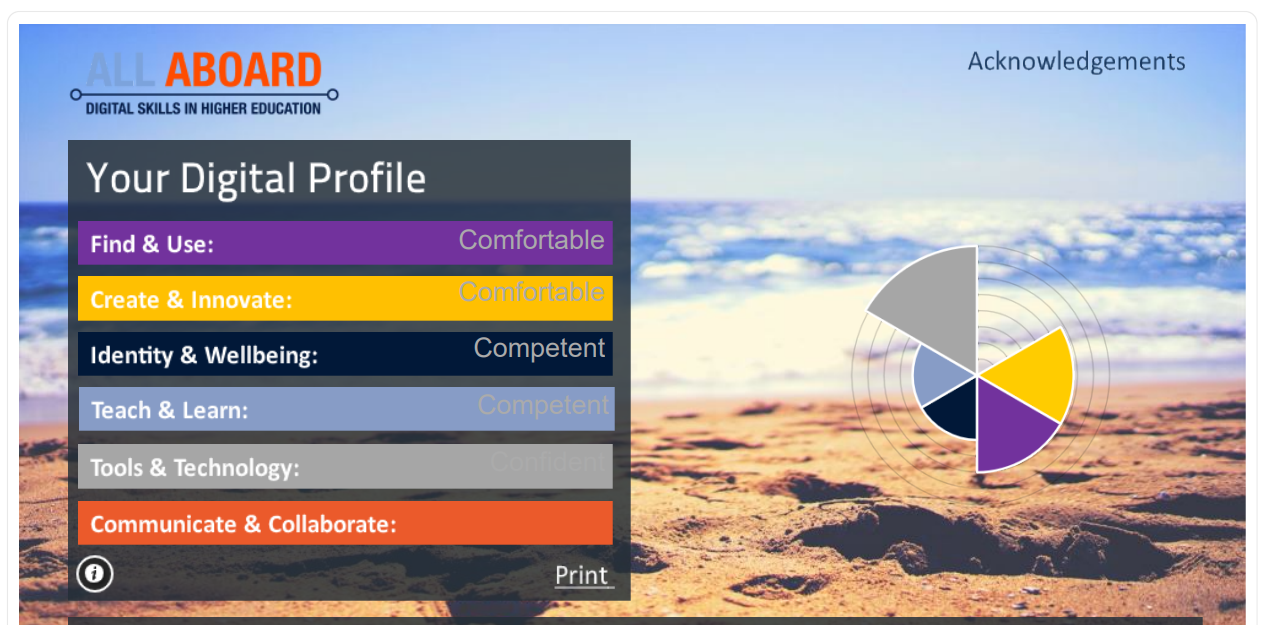My Profile
So, according to my digital profile, it seems like I capture the idea of digital skills perfectly; but that does not translate to a complete lack of digital literacy. Let me explain. As per the article, digital skills and digital literacies are often misconceived as synonymous with one another, which is completely not true. As the article presents the distinction, which I really liked by the way, digital skills pertain to the “what and how,” while digital literacy is more concerned with “why, when, who, and for whom.” In other words, digital literacy concerns itself with the context of use of tools, the dynamics underlying online interactions, and any potential “avenues” of ramifications on oneself. I noticed that my “Communicate & Collaborate” attribute is virtually non-existent, which I find to be very true since I voluntarily took the decision to abandon social media a couple of months ago due to various reasons, one of which is to enhance my in-person skills. By sheer contrast, my profile also indicates a very strong level of tools and technology, which I believe to address the aforementioned “what and how.” Anyways, out of the four tracks, I aim to take the Twisting Path as it gives a taste of the the three other paths.
Taught Path – Online Identity
Having noticed a lacking in the Identity and Wellbeing aspect of my profile, it felt appropriate to go for the Online Identity Module. Not to mention my passive consumption of social media as someone who just basically follows the news, current events, and memes. The module divides itself into five units: digital footprint, one’s online presence, social media, the dark side of social media, and taking charge of your online profile. I loved the part about digital footprint and the fact that it was objective in its deconstruction of the ‘traces’ we leave across sites, acknowledging what some deem as positive implications (like not having to repeatedly fill out credit card info). I loved the suggestion of using Google searching as a litmus test o gauge how internet-trackable you are. The module makes the distinction between online visitors and residents as those who are just passive users (i.e. searching, watching videos, etc.) and those that are socially active on social media, respectively. I was not particularly fond of the section about memes as the module exaggerates the threat of memes, because at the end of the day: memes are just memes, they are jokes. Some memes employ misleading news/ headlines as a means of poking fun of fake news, or inaccurate media coverage in and of itself. As such, I believe it is the responsibility of users to double-check any piece of news/ information acquired online, which is where – I believe – the module and I concur. The section about protection was accurate in covering the threats one faces online such as but not limited to harassment. This is particularly relatable as an Egyptian because we have had numerous instances of girls who were continually blackmailed by their sensitive, private photos in the virtual space, ending with them taking their own lives in fear of the slightest potential of having their photos released. The bottom line is online harassment, bullying, and blackmailing could all have, literally, deadly consequences on people. However, I am still insistent on abandoning social media because I believe, fundamentally, that if a person needs or wants to communicate with anyone, they can just reach out in person or catch-up via phone call. Social media, texting, and pictures abstract the genuine reactions and and finer nuances of conversations/ speech.
Theory Path – The Power of Social Media Companies
I picked the Transparency article of the Mozilla Internet Health Report 2020. I believe this to be a rather pressing issue in light of the unmatched, growing power and control that social media companies have over public discourse. I appreciated how the article examines the equity part of transparency as it highlights the disparity in Twitter and Facebook’s handling of election fraud/ misinformation in underdeveloped and developing countries. For example, how fact-checking tools are highly present in the online American political scene, but virtually absent in others like Nigeria (deemed unimportant, perhaps). What captured my attention the most about the article, in addition, was the idea of the power and influence that these companies wield over the narrative. For instance, a Facebook data scientist and whistleblower, alleges that he “affected national presidents without oversight”. This presents a rather worrisome notion, and reinforces the idea that such companies need to be more transparent in their handling of their online spaces, so to be held accountable. Also, I totally support the position that “algorithms” and “low-paid moderators” should not be entitled to to veto the existence of a person’s profile or a certain speech (provided that there is no direct incitement of threats to an individual, needless to say). I believe that instead of removing content that some people deem inaccurate or false, the social media company could add side notes to the post in question, giving the reader the power to judge and decide for themselves. This is the case for Twitter now, for example, as it introduced community notes, where it allows users to add context/ rectify potentially misleading posts.
Tinkering – City Graphic Poster
So I chose this path for two opposing reasons: A, I love eloquent minimalistic graphic designs; B, I am highly unskilled in this domain. Simply, the task was to create a promotional image for a city so it was only natural to go for Cairo. It was kind of challenging for me because the closest thing to graphic design that I’ve done, if it even qualifies, is doing memes. At first, the assignment indicated that I use adobe illustrator, but, since I don’t have the license (and don’t intend to for a one-time thing) I resorted to my usual meme editor, open-source editor: Pixlr. And, it did the job perfectly as it supported adding filters and superimposing gradient text. I had taken a good picture of the Great Pyramid last week, so it felt convenient to put it to use. Afterwards, I superimposed the Arabic translation of Cairo (Al-Qahira or القاهرة) onto the picture to reflect the Arabic culture of Cairo. However, after exporting the picture and before uploading it over here, I noticed that this won’t be as readable/ accessible for non-Arabic readers. Therefore I decided to amend the design and add “Cairo” just below the other existing text. I broke the fear barrier of designs by this assignment, got acquainted with design considerations that visual designers ought to take into account, and the digital divide brought about by somewhat unreasonably hefty licensing fees.



Provide Feedback